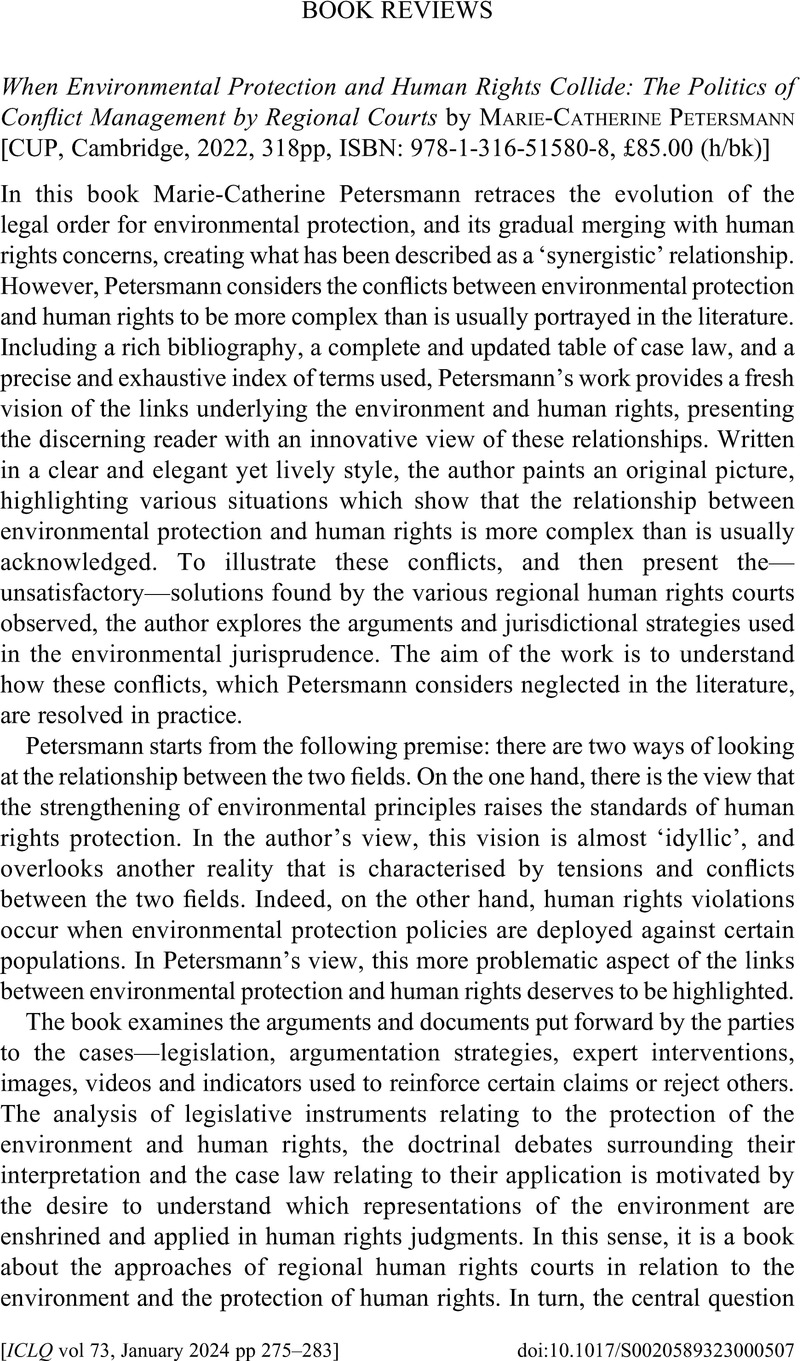No CrossRef data available.
Article contents
When Environmental Protection and Human Rights Collide: The Politics of Conflict Management by Regional Courts by Marie-Catherine Petersmann [CUP, Cambridge, 2022, 318pp, ISBN: 978-1-316-51580-8, £85.00 (h/bk)]
Review products
When Environmental Protection and Human Rights Collide: The Politics of Conflict Management by Regional Courts by Marie-Catherine Petersmann [CUP, Cambridge, 2022, 318pp, ISBN: 978-1-316-51580-8, £85.00 (h/bk)]
Published online by Cambridge University Press: 18 December 2023
Abstract
An abstract is not available for this content so a preview has been provided. Please use the Get access link above for information on how to access this content.

- Type
- Book Reviews
- Information
- Copyright
- Copyright © The Author(s), 2023. Published by Cambridge University Press on behalf of British Institute of International and Comparative Law


